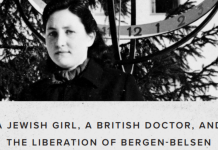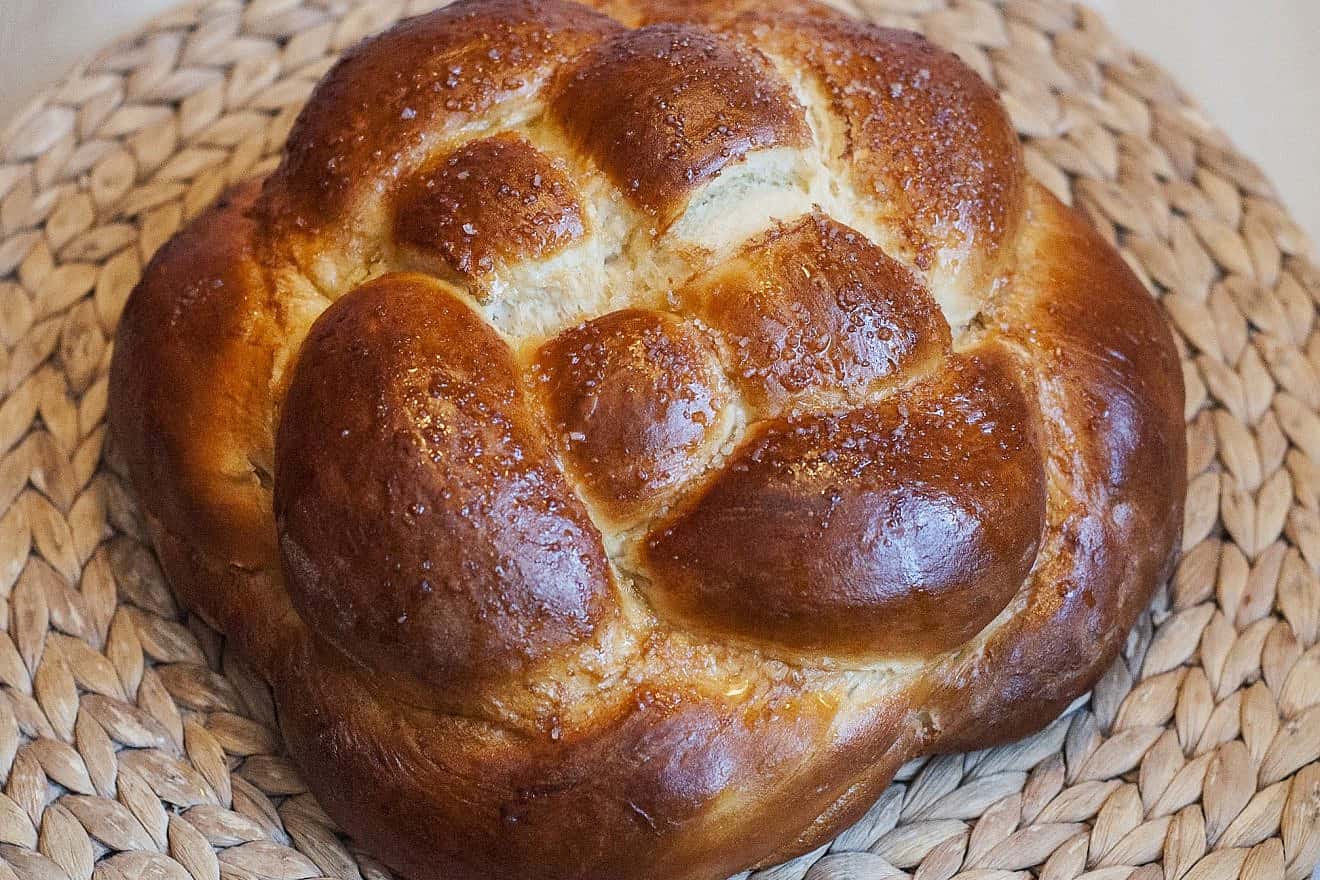I always love the dramatic reveal when pulling the cover off the challah on Shabbat and holidays—anticipatory eyes lighting up around the room as the beautiful bread appears in all its shiny glory in the moments before it is ripped apart and stuffed into hungry mouths—but I especially love this moment during the High Holidays, when the customary braided loaf is replaced with a new shape special to these few weeks of the year. There’s a split-second moment of surprise, then recognition; it is a call to attention, a call to intention, because these days are different from all other days.
On Rosh Hashanah, on Yom Kippur and throughout this season of teshuvah (turning, returning, repenting), we work towards a powerful promise of renewal for the year ahead through both time-honored communal words and rituals, and personal acts of repentance and improvement that are unique each year. Through our prayers, through our actions, and even through the symbolic foods we eat at our holiday tables, we reach towards a return to that which is enduring, and a turn towards possibilities and blessings yet to be revealed. For a ritual that embodies the themes and soul-work of this season and offers rich opportunities to blend the enduring and the yet-to-be-uncovered, you need look no further than the humble challah.
As a full disclaimer, I’m a bit biased when it comes to challah; I’ve spent the last seven years working with it as an artistic medium for interpreting and teaching Jewish text and tradition (I expanded my original Instagram-based teaching project, @lechlechallah, into a book: Loaves of Torah: Exploring the Jewish Year through the Art of Challah, published last fall by the CCAR Press, and I teach workshops on interpretive challah- shaping all over the country, most recently with American Jewish University). I love creating imaginative new shapes out of challah dough as a way to bring conversations about Torah or the themes of the calendar to the table because not only is it eye-catching and delicious, but there is such rich religious history and spiritual significance already baked into the material itself. Challah and the many rituals associated with it—the ingredients used, the ritual of hafrashat challah (removing a piece of dough as a symbolic tithe), the number of strands and loaves used, the use of a cover, the sprinkling of salt and more—deliberately reference practices from Torah, especially connections to the sacrificial service, which is how our spiritual ancestors communicated with the Divine.
Challah also carries enduring memories of other times and places in which Jews added their own interpretations and twists to their holiday breads; the typical braided shape of the Ashkenazi challah emerged in about the 15th century, and special shapes for different holidays began to develop not long after. Among these we find different shaping traditions for the Yamim Nora’im, the Days of Awe. When most challah covers are pulled away on Erev Rosh Hashanah, they will reveal round challahs, either spiraled or woven, which we might interpret as symbolic of the crown of malchuyot (“God’s sovereignty”), the rosh (“head”) of the year, the cyclical nature of time or the process of teshuvah. You might also see a challah in the shape of a hand, open in supplication or extended in forgiveness, or signing the year’s decree; ladders and birds that symbolize connections between heaven and earth or the ascension of prayers; or pomegranates, manifesting an abundance of blessings and mitzvot in the year ahead. Making or serving any of these special shapes for a Rosh Hashanah or Yom Kippur meal offers a connection back to tradition, as well as a way to literally take in a reminder of our intentions for the year to come, and gives us the spiritual and physical nourishment to make them a reality.
While making any of these shapes is a wonderful way to bring additional meaning to the holiday table, nothing quite beats the power of creating your own new design, or a variation on a traditional one for reminding us that these meanings don’t just live in our heads but in our hands. When we make challah, we’re actually engaging in a microcosmic act of Creation, which we recall on Rosh Hashanah as we say hayom harat olam—“this is the day the world was conceived.” Echoing processes through which God creates the world in Genesis 1 and 2, making challah dough transforms basic ingredients from our earth by separating and combining, kneading and forming, resting and multiplying, and adding a nishmat chayim—a life-giving breath (Genesis 2:7)—in the form of yeast to create a living dough that has the potential to be a creative partner itself—just like the first human beings, and just like each one of us today. Using that dough to shape our own intentions and interpretations of the themes of this season into a singular challah design brings all of that creative potential into tangible reality.
We are created in the image of the Creator, and therefore have implanted within us the Divine power to transform our reality through our words and actions; we have the power to dream new realities into being and to build them with our own hands. May the challahs we shape and share at our tables in this season of teshuvah return us to our connections to the Eternal and turn us towards the future we wish to bring to life this year.
Shanah Tovah!


























